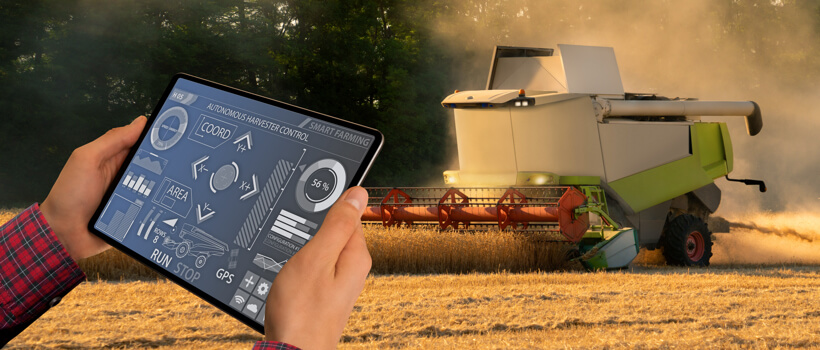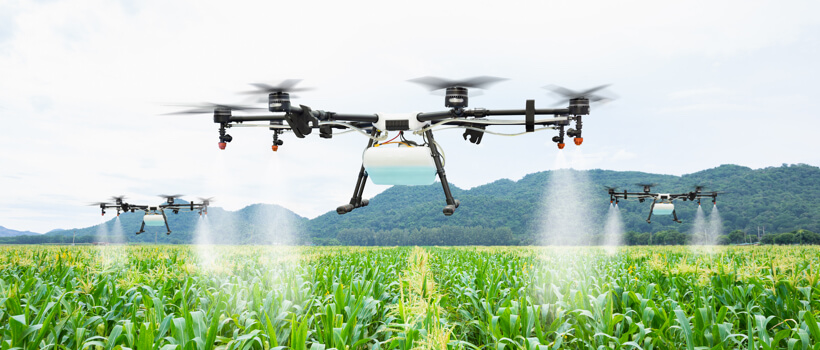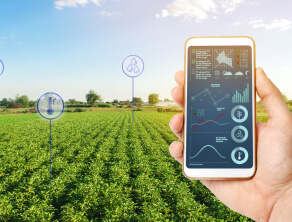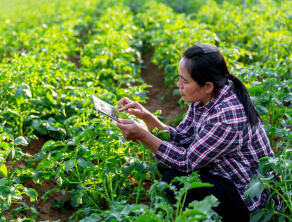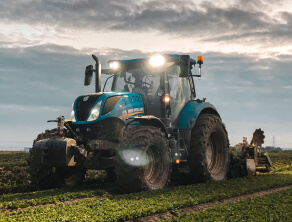Can Farmers Work From Home? Digital Solutions in Agriculture that can Make it Happen!
Table of Contents
- Impact of COVID-19 on agriculture- complex and varied
- Work from home for farmers?
- Digital technologies to the rescue, again.
- Agritech solutions for farmers by [x]cube
- Agritech is the future- irrespective of COVID-19
Impact of COVID-19 on agriculture- complex and varied
The impact of COVID-19 on the economy has been devastating and it’s long term impacts can’t be ascertained yet. Every sector has been affected by the pandemic, but its impact on agriculture has been more complex and varied across different segments. From supply chain disruptions and unpredictable demand-supply of food across the globe, the unforeseen and unexpected challenges created by the pandemic created an environment of vulnerability, uncertainty, complexity and ambiguity. But amidst all the other challenges, the most critical one was the lack of manpower due to movement restrictions in lockdowns.
Work from home for farmers?
With a constant or upper side fluctuation in demand for food, farmers and other agriculture stakeholders are concerned that in such events, how can they ensure that farm activity continues without getting affected. The answer, of course, lies in digital technologies. That’s right, a model similar to work from home for corporates can be applied to farming operations and related agriculture activities as well. All you need is a mix of right technologies- sensors, IoT, drones, cloud, mobile apps and whichever technology it takes to enable smooth and uninterrupted farm operations.
Digital technologies to the rescue, again.
Let’s have a look at some ways in which farmers can manage their fields remotely in the event of a lockdown or other emergencies that may restrict the availability of manpower.
-
Autonomous machinery
Similar to autonomous vehicles, farmers can deploy autonomous tractors and farm equipment for tasks like mining, spraying and sowing. The buzz around autonomous vehicles has been quite high but its realization still seems a little far out there on the streets. However, farms may be the first adopters of autonomous vehicles because of the low-risk factor on farms- there are no pedestrians or buildings with which the tractors can collide. The acres of open land provides a low-risk testing environment as well as makes it feasible for agriculture activities to continue without interruption caused due to lack of manpower.
-
Livestock monitoring
Many farmers don’t just have to manage crops but livestock as well. In case of farmer unavailability or other limitations, IoT-enabled livestock solutions can help farmers monitor their livestock remotely. Livestock monitoring IoT solutions involve embedding sensors into livestock wearables in order to monitor health parameters such as heart rate, respiratory rate, temperature, and even digestion. These sensors can also allow farmers to track an animal’s location in case if they wander far-off. Farmers can monitor this data over a mobile application and identify if their manual intervention is required.
-
Smart Irrigation
With farmer unavailability, irrigating crops becomes a critical challenge. Using too much or too little water can have an adverse impact on crop yields as well as soil health. To counter this challenge, farmers can deploy sensors on their field. These sensors can measure soil moisture levels, and use a sprinkler system to discharge water as needed. This can allow farmers to not only to avoid engaging themselves in another manual task but can also help to reduce water consumption by up to 30%! This solution can also be deployed at places where the primary concern is the efficient utilization of water.
-
Weed and disease control
Drones fitted with cameras and enhanced sensors can be used to assess weed and diseases in arable crops. Drones can capture data such as different plant species, extent to which crops have succumbed to disease, and much more. Farmers can view and analyze this information using a software or an app on their mobile phone and take control measures accordingly. They don’t necessarily have to go out and cover a large area of land through manual assessment.
-
Crop Spraying
Once farmers have identified infected crops, they can still skip manual work and use drones to spray pesticides. Some larger drones are capable of carrying and applying pesticides or fertilizer to crops. Although only a handful of regions and countries permit the use of drones for this type of task due to security reasons, it is likely that a lot of other countries will ease restrictions for drones to carry pesticides, considering the exceptional event like COVID-19. Drones can also be used for small scale irrigation purposes where the water requirement is less.
-
Farmer education
Farmers often need insights and information on best farming practices, current market trends, weather forecasts and much more. All this information can be made accessible to them using mobile applications. Informative videos, crop information, expert opinions and other relevant information can be made available to the farmers. In case of internet limitations, mobile apps can also be equipped with offline functionality where the data can sync automatically when there’s internet connectivity and be readily available in offline mode.
Agritech solutions for farmers by [x]cube
The longest and most complex route in a supply chain is between the company and the farmer. Companies are heavily dependent on their sales representatives for information dissemination to farmers. The situation gets more tricky if the company doesn’t have a strong distribution network and depends on retailers to do communication on their behalf, which may be unreliable, considering that retailers sell their competitor’s products as well.
[x]cube LABS has provided farmer-centric solutions to leading agriculture companies worldwide. For one of our clients, we developed a mobile application that allows farmers to access vital information related to our client’s products, crops, seeds and best practices even when they are working in remote fields where the availability of Internet is limited. Farmers can select any category based on the information that they need such as the best activity to perform based on time of the day, weather forecast, how to use the company’s products and a lot more. This has led to significant improvement in farmer engagement and helped the company to establish trust among farmers regarding their products.
Recently, [x]cube LABS also worked on a government initiative, Ryuth Bharosa Kendra, that enables on-demand delivery of agri-Inputs for farmers. Using a digital kiosk or mobile application, farmers can order agri inputs at fair prices and receive them within 24-48 hours. Additionally, the digital platform also provides:
- Information dissemination from government to grass-root level, especially to the remote villages through Digital Kiosks
- Access to information on market intelligence, real-time market data, and procurement centers information
- Information on weather & pest forecasting to farmers
- Details of agri & allied supplies at the village level to the farmers
- Latest technology videos on crops through offline storage
- Relevant localized information required for the village
In our experience of delivering agritech solutions, we have seen agriculture companies leveraging tech effectively to improve their sales, achieve good farmer engagement, access ad provide real-time information, create brand value for themselves and more.
Agritech is the future- irrespective of COVID-19
If you’re thinking that the above solutions will come in handy only in times of crisis, then think again. While most of the solutions above may seem to primarily address the shortage of manpower on farms, there’s a lot more than they’re assisting with. Even when the impact of the pandemic cools down, the other challenges facing the agriculture industry will continue to exist. There will still be pressure to increase food production, the supply chain will continue to suffer, stakeholders will seek more ways to operate efficiently, farmers would want to spend their efforts on priority tasks and the shortage of natural resources will increase. In all these cases, digital solutions discussed above would still be relevant and in the face, will be needed more than ever before. The current situation is, therefore, an opportunity to fast track and upscale farm operations using digital technologies- because agritech is undoubtedly the future.
![Blog-[x]cube LABS](https://d6fiz9tmzg8gn.cloudfront.net/wp-content/uploads/2016/06/blog_banner.jpg)



